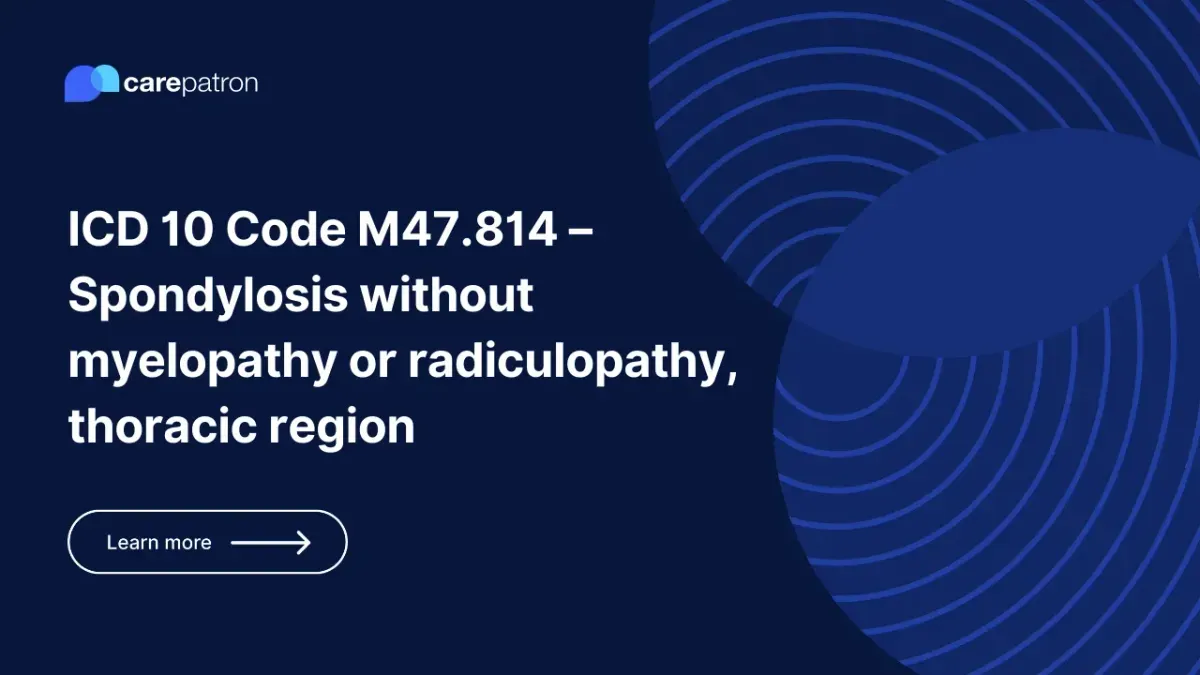
M47.814 – Spondylosis without myelopathy or radiculopathy, thoracic region
Dive into ICD-10-CM code M47.814 - Spondylosis without myelopathy or radiculopathy, thoracic region. Understand diagnosis, billing, clinical info, and more.
Use Code
EHR and practice management software
Get started for free
*No credit card required
Free
$0/usd
Unlimited clients
Telehealth
1GB of storage
Client portal text
Automated billing and online payments
